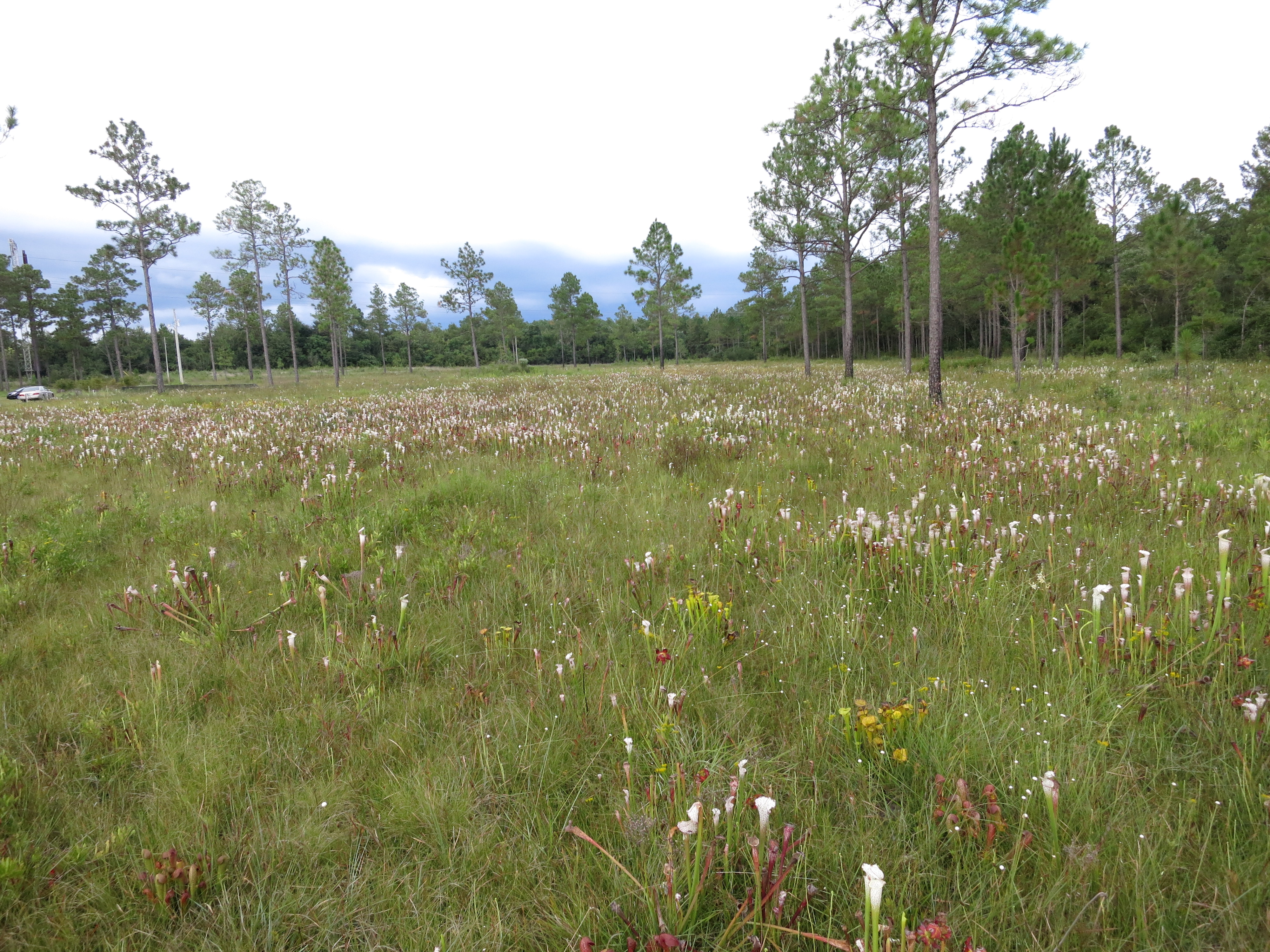Post by meizwang on Nov 22, 2013 17:28:01 GMT
There are perhaps only a handful or two of large populations of S. leucophylla left in the wild. The majority S. leucophylla populations that still remain are either small relic patches of a once giant field of plants, or volunteers in modified habitats (ie. man made drainage ditches). Many of the historically giant populations are now either destroyed, or if they haven't been touched whatsoever, they are now etiolated plants growing in thick, dense forests.
Before people dominated the landscape and plowed or altered every square acre of land, fires would come in and burn up the forest, creating new habitats for Sarracenias to colonize. Today, those forest are now homes, structures, and farms where fire isn't permitted since it would damage people's property.
It's surprising how short lived many of these sites are, especially during the more recent times. On the other hand, some patches still exist today, and they've struggled to survive the face of human negligence and destruction.
This site below only exists because a power company consistently clears the grasses every year or so to protect their electrical equipment. Nearby, On the side of the road, I had already seen signs of round-up, and it's only a matter of time when they spray this field. One application of herbicide can ruin centuries of growth. If I had to bet, this site will be sprayed in the next few years once they realize the cost savings.
As pessimistic as it may seem, this is the reality for many of these sites. We visited many historic sites that didn't have a single plant left due to annual herbicide applications. However, there are some remote sites like the one below that still exist today, so maybe...just maybe a few of the "unprotected" sites will stand the test of time.
Enough doom and gloom talk, let's check out these beautiful fields! Here are some S. leucophylla in Washington Co, AL, photos taken 9/11/13. First couple of photos focus on the field itself-there were 3 large patches at this site:
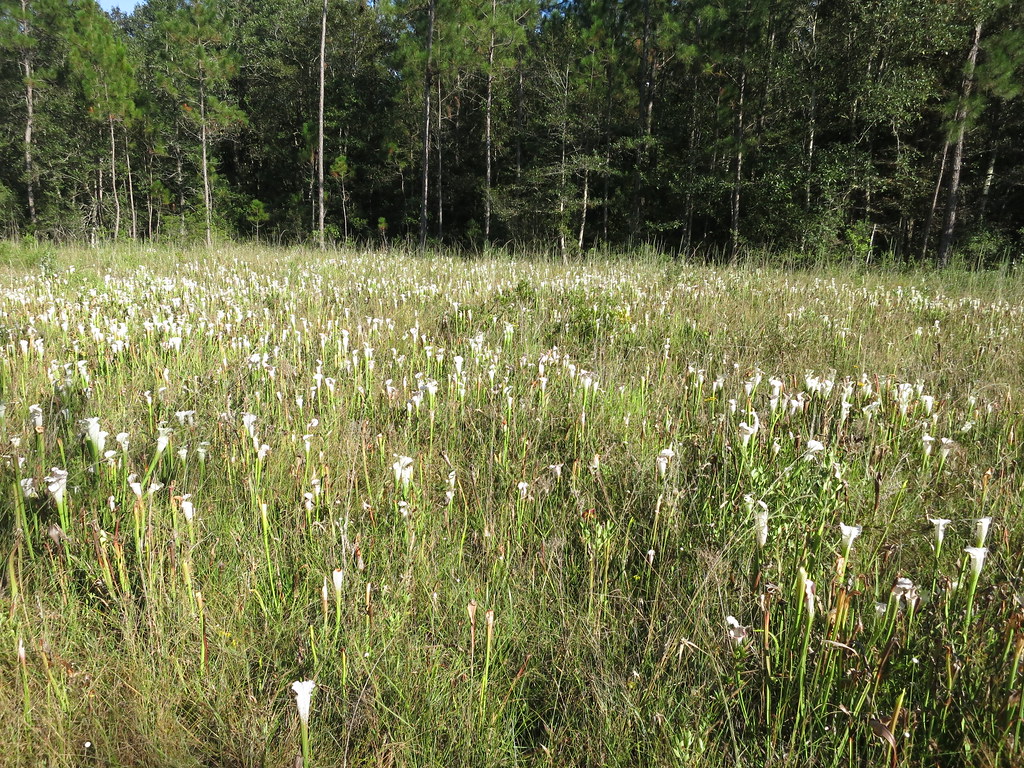
Plants here were as healthy as can be!
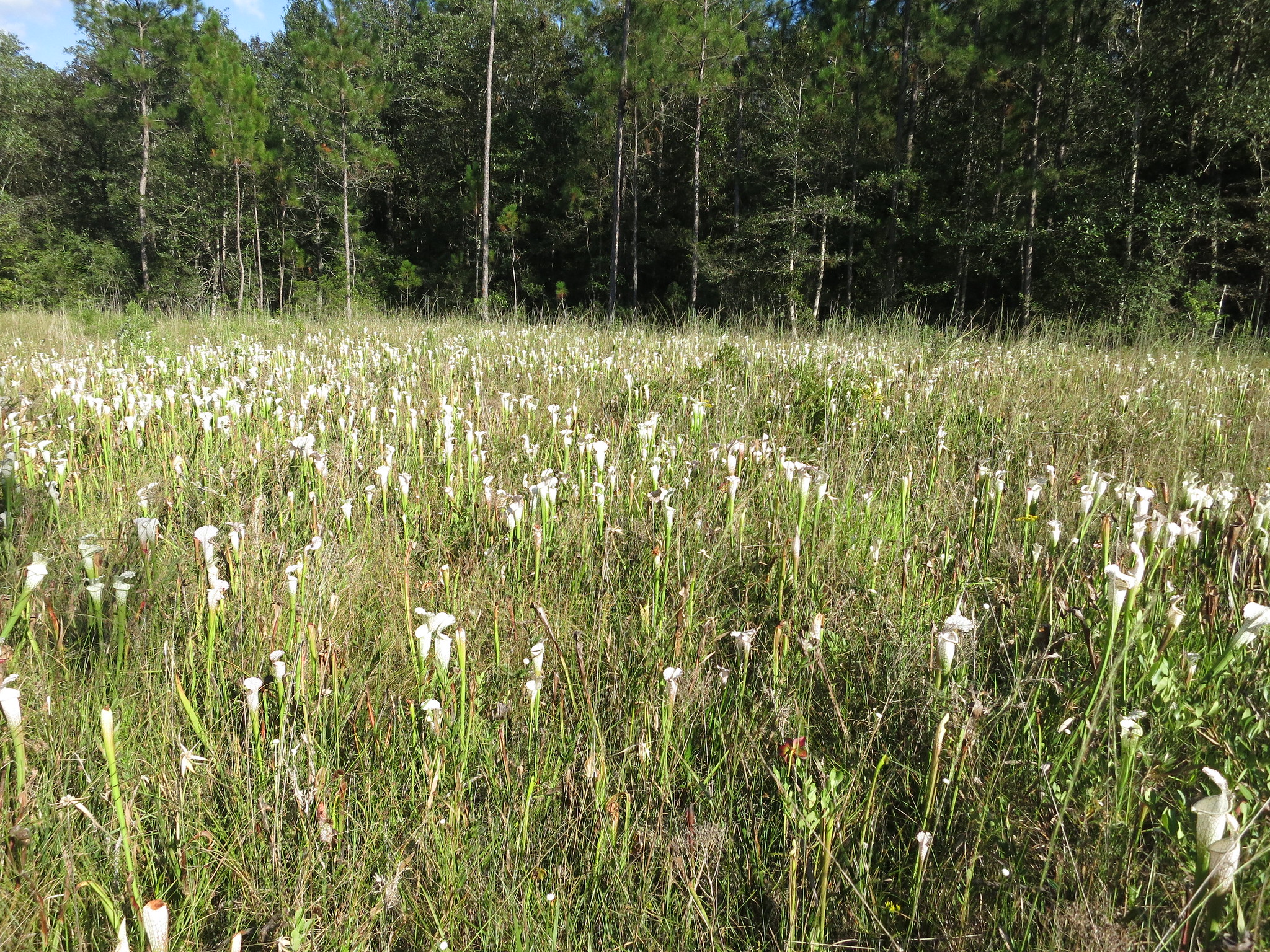
There's nothing like a huge field of leucophyllas:
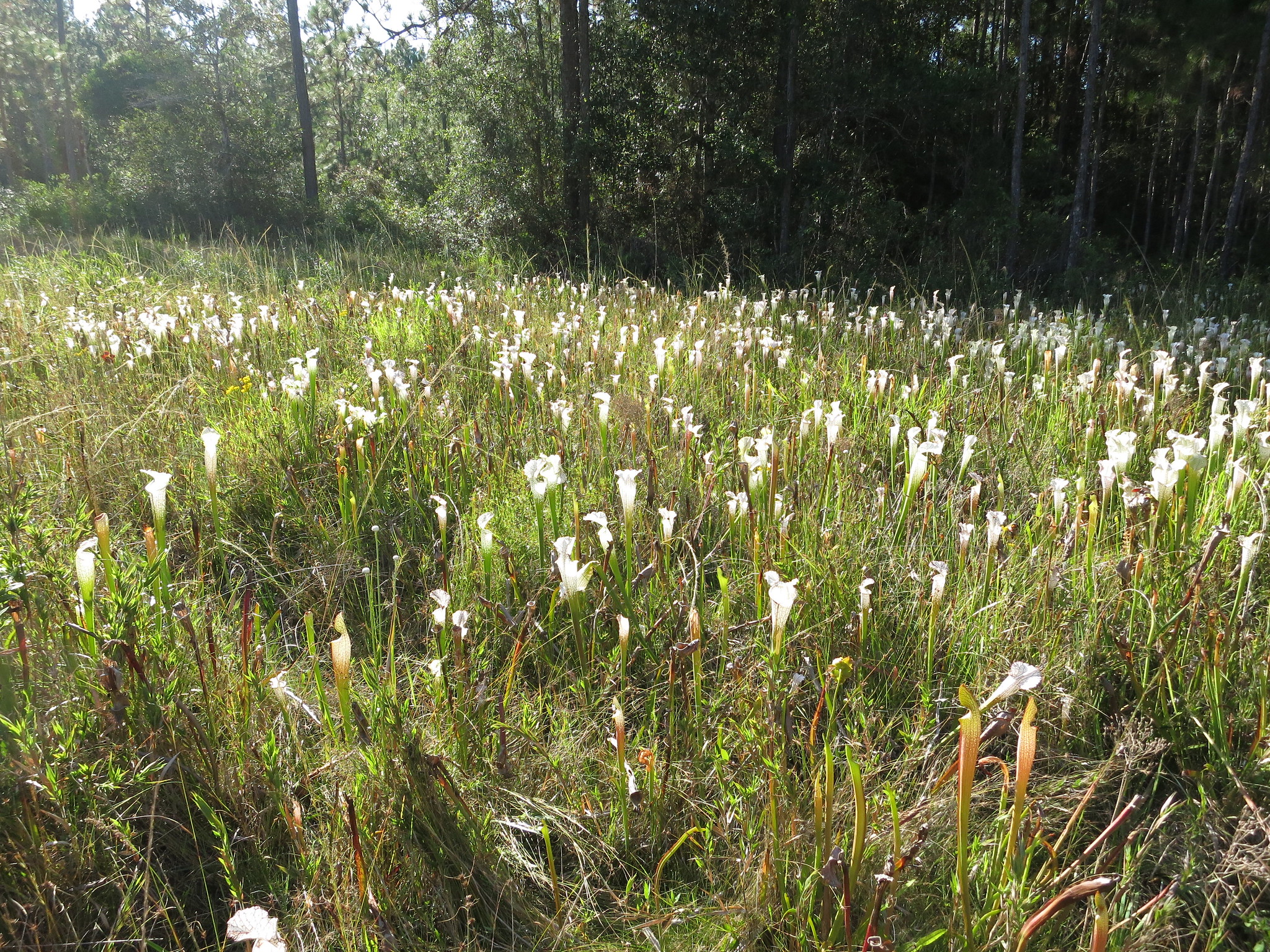
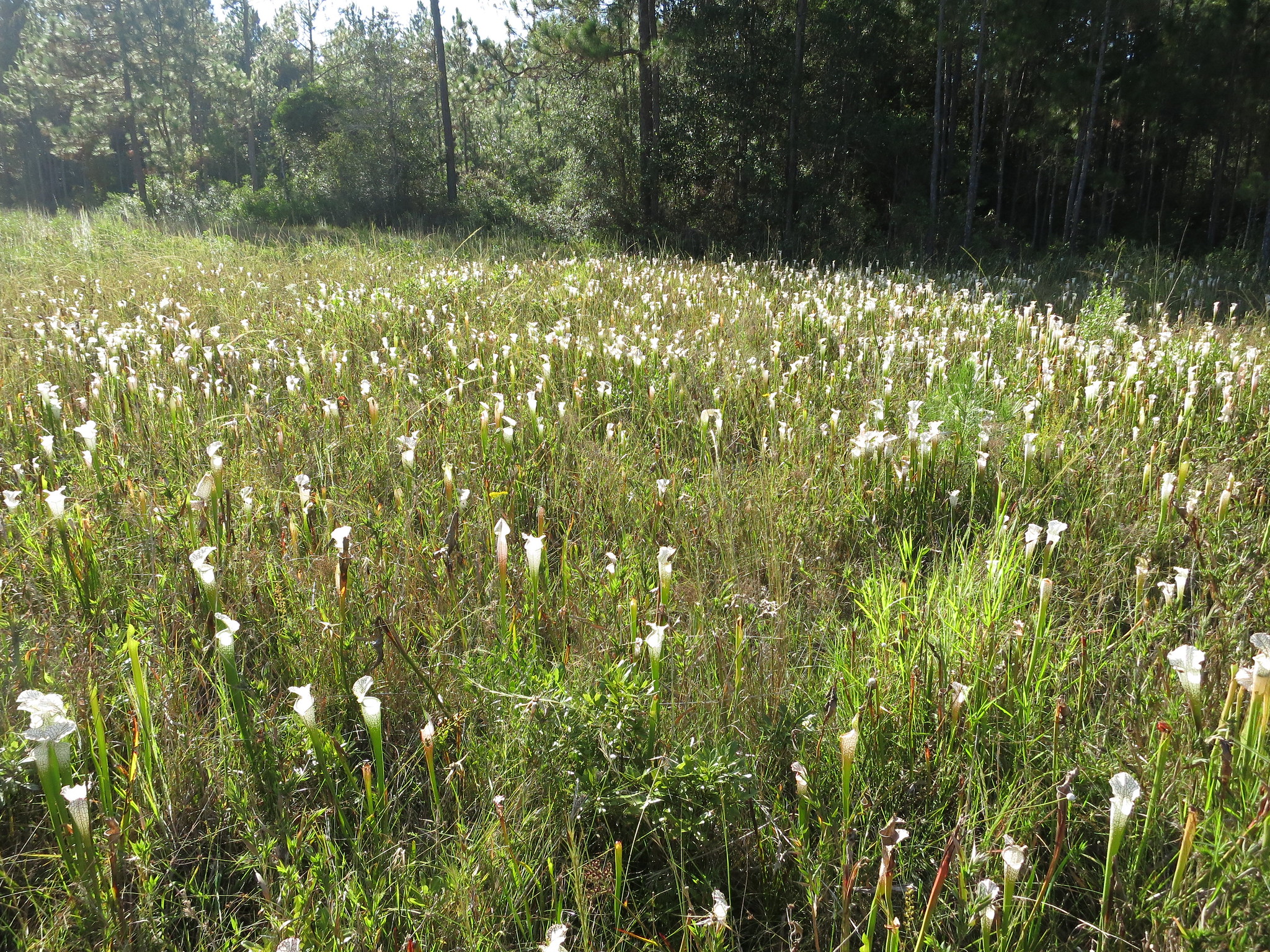
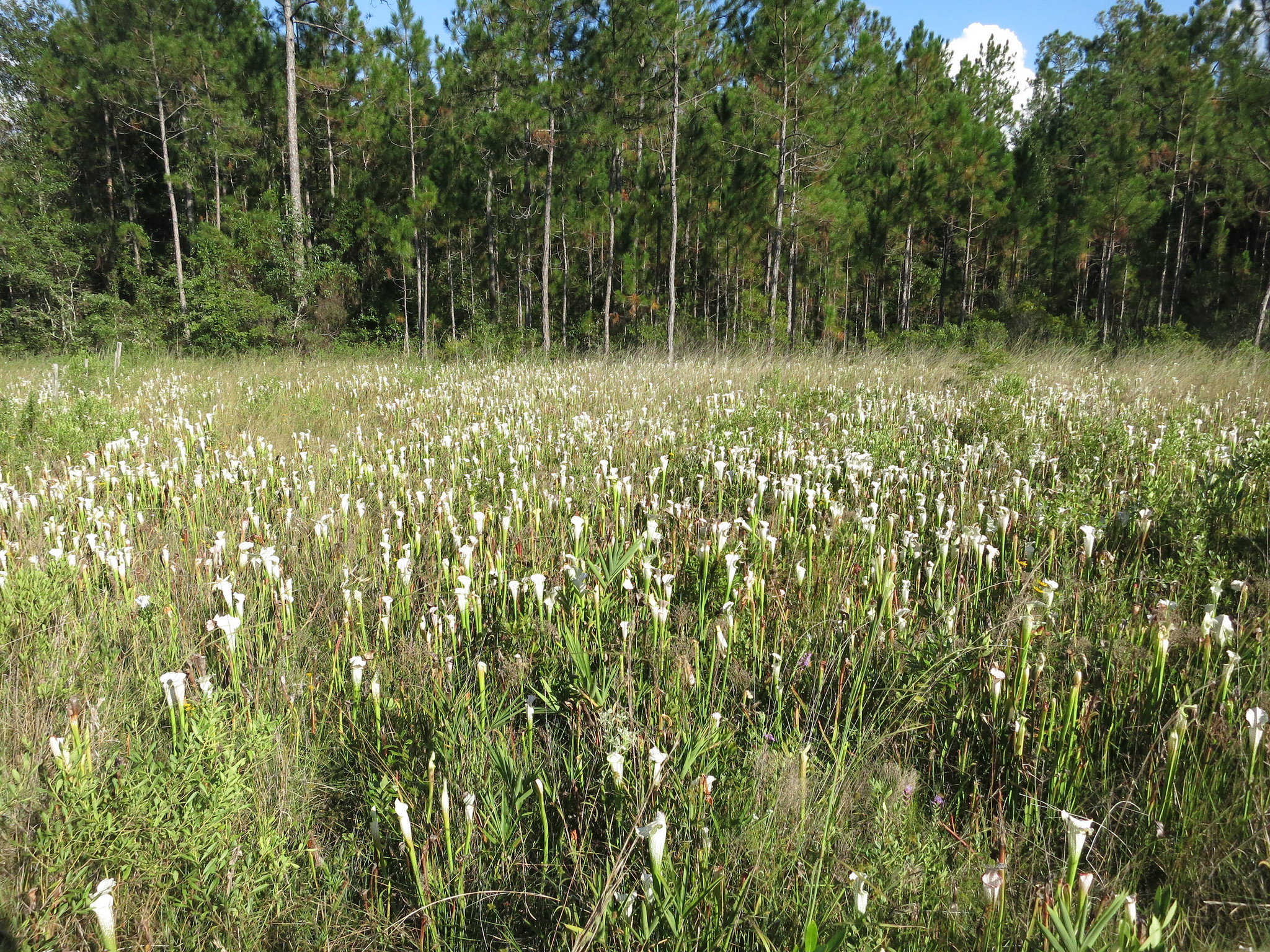
There were also S. rubra wherryi and S. psittacina (and some giant psitts!) at this site as well, but the grass was really tall, and you could only see the leucos. Still very inspiring to see a patch this size, which is still relatively small compared to what used to exist:
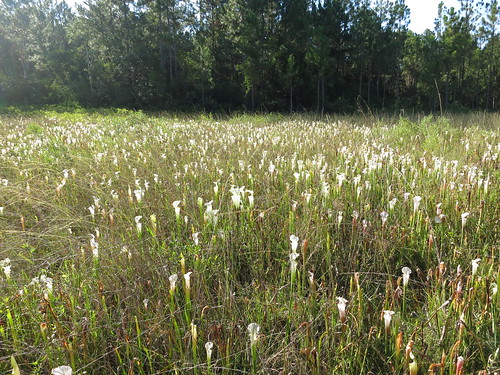
thousands of plants everywhere:
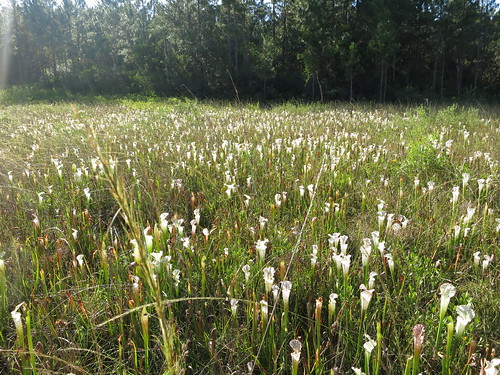
Tons and tons of plants:
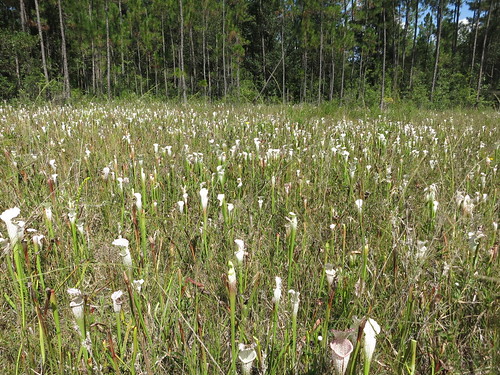
Poor Axel Bostrom of California Carnivores stepped on a fire ant hill at this site, and the pain was so extreme, he had to go wait in the car. These hills were hidden deep in the grass, and were EVERYWHERE:

nice typical S. leucophylla with a lynx spider. Notice the beautiful red lips!
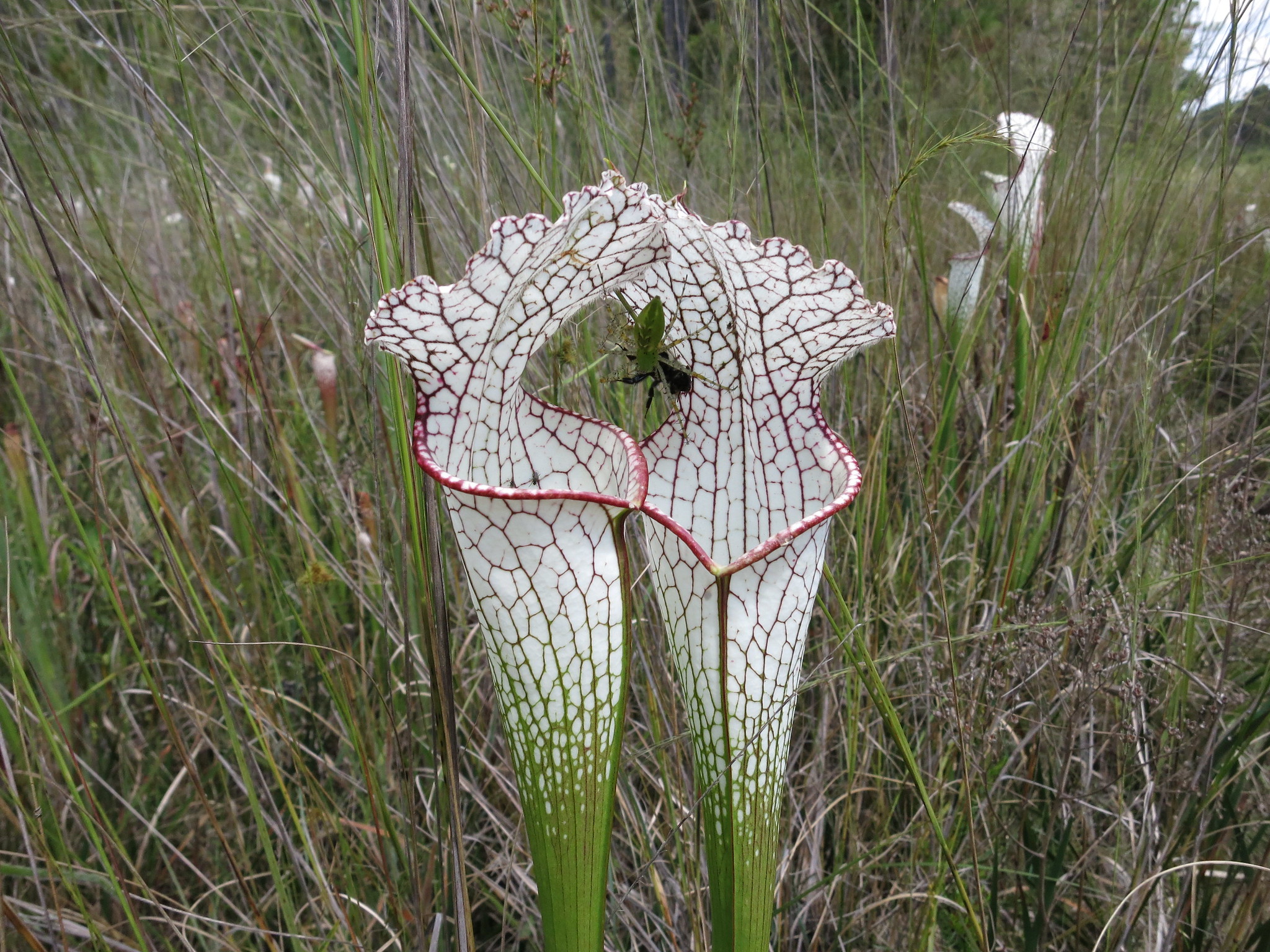
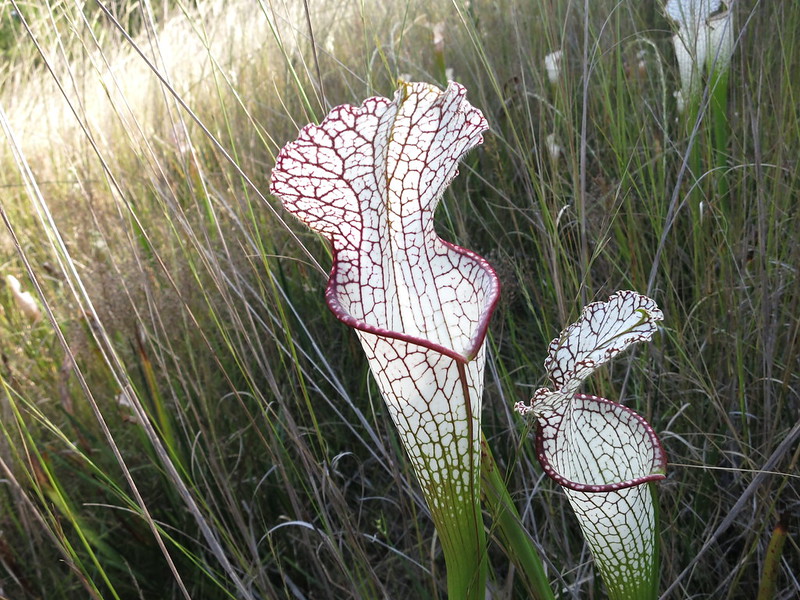
S. leucophylla var. alba with a small lynx spider:
This field was loaded with a diverse amount of S. leucophylla var. albas:
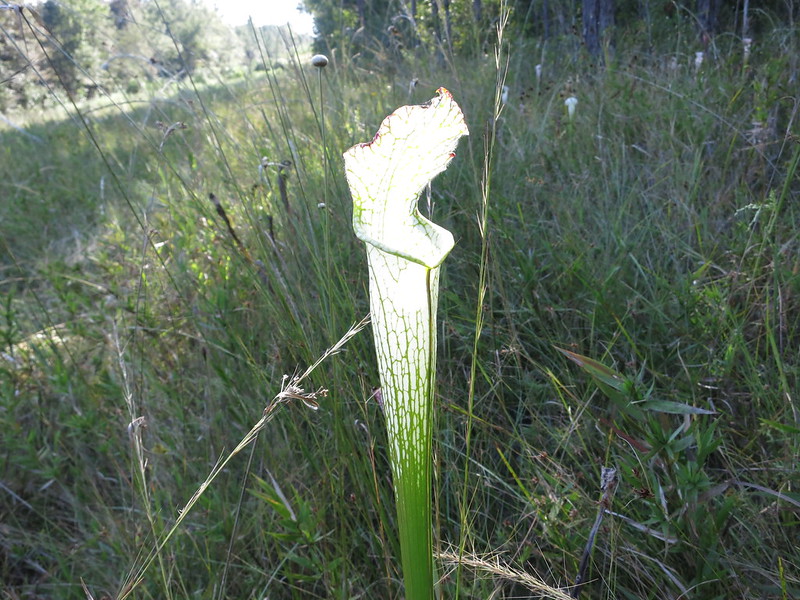
S. leucophylla var. alba-this one has a little more green in it. Notice the brown marks on the lower portion of the petiole: the traps were overloaded with love bugs, causing "indigestion":
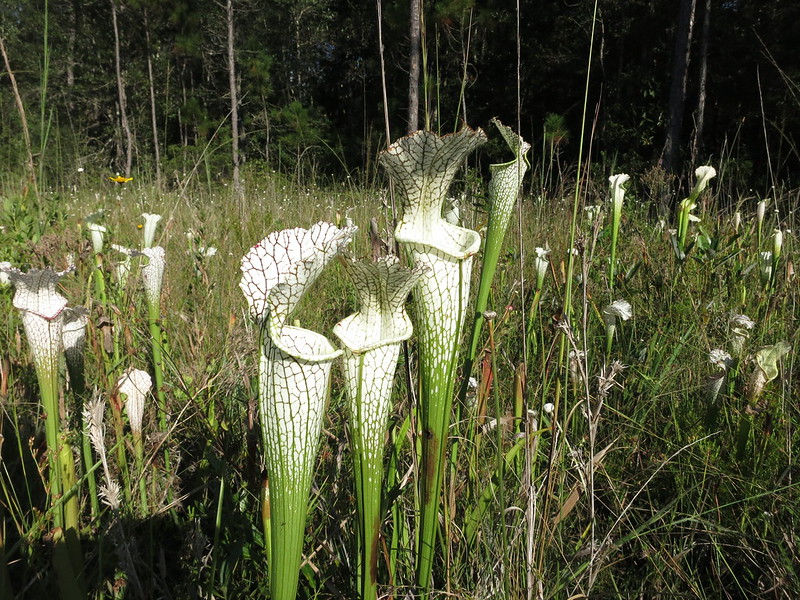
Another beautiful clone of a "regular" S. leucophylla-this one has nice red veins:
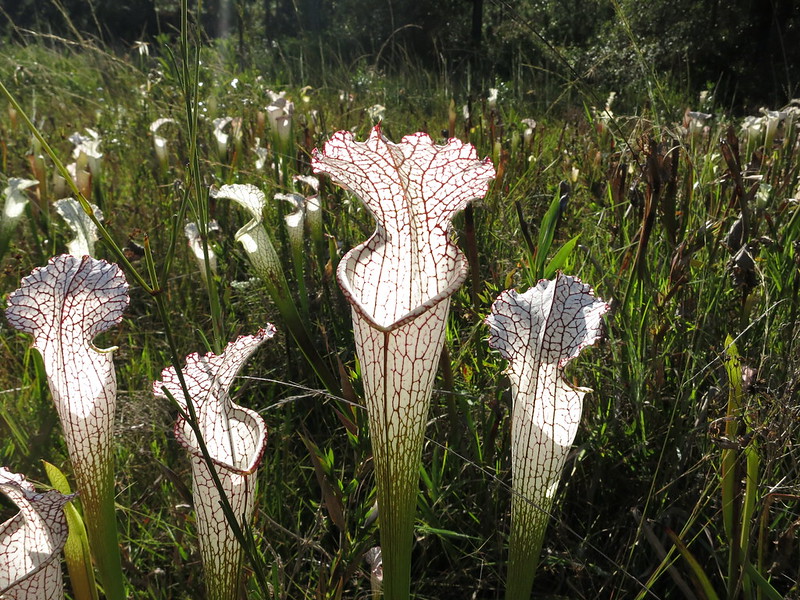
S. leucophylla, almost an alba, but not quite:
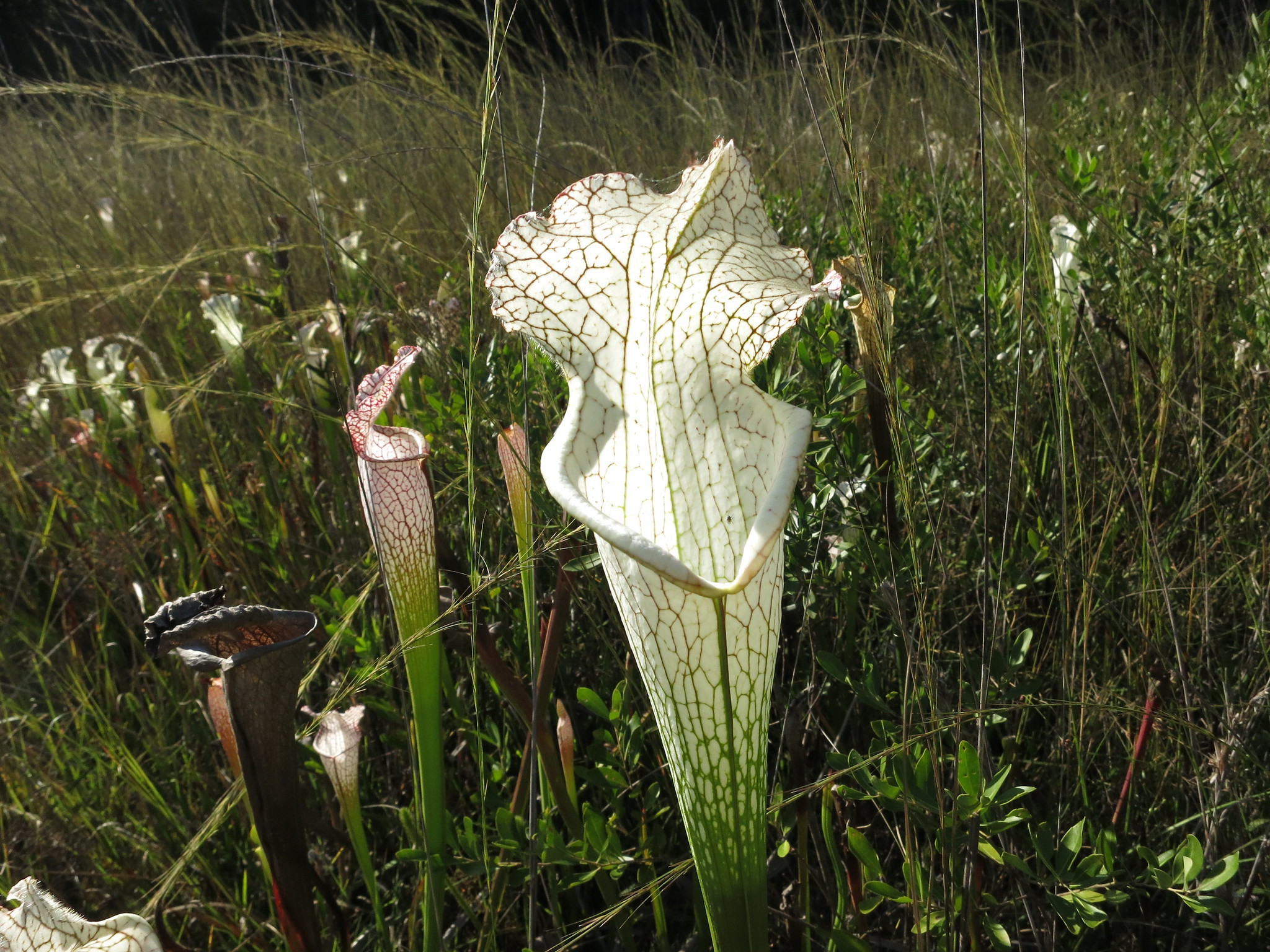
another shot-reminds me of a wanna-be Hurricane creek white:
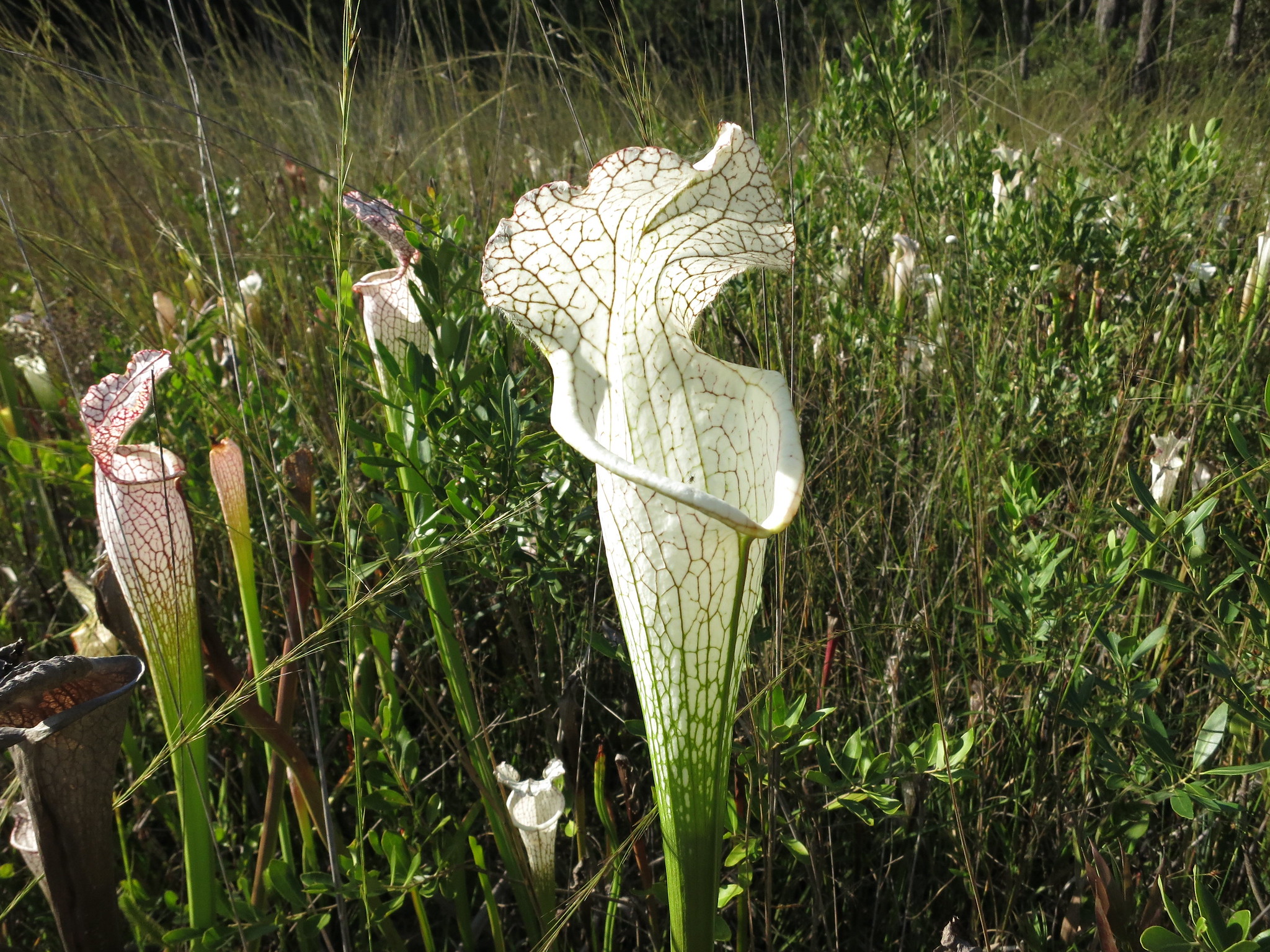
Check out the slight red blush on the sides of the "throat" on this one. If you look carefully, there's a small spider hidden in the lid of the trap:
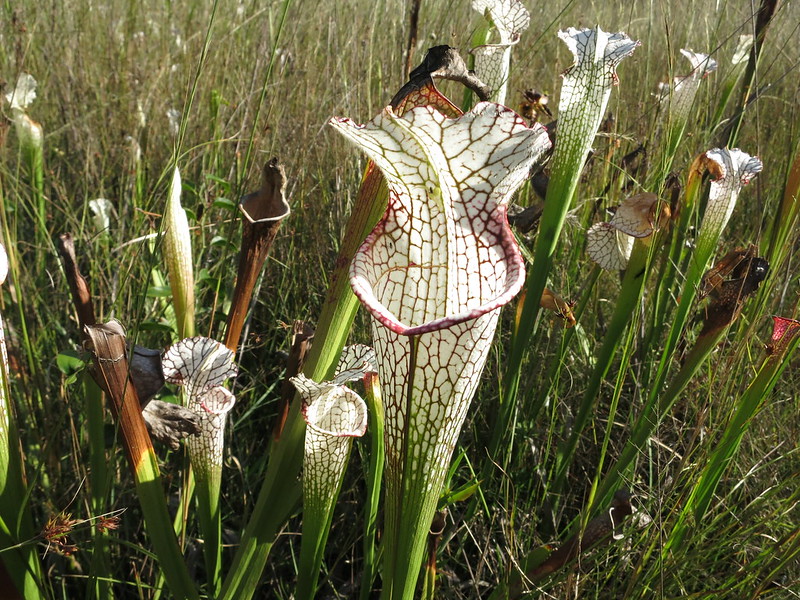
Trap is just starting to open up on this one:

A regular S. leucophylla, and a var. alba in the lower right hand corner:
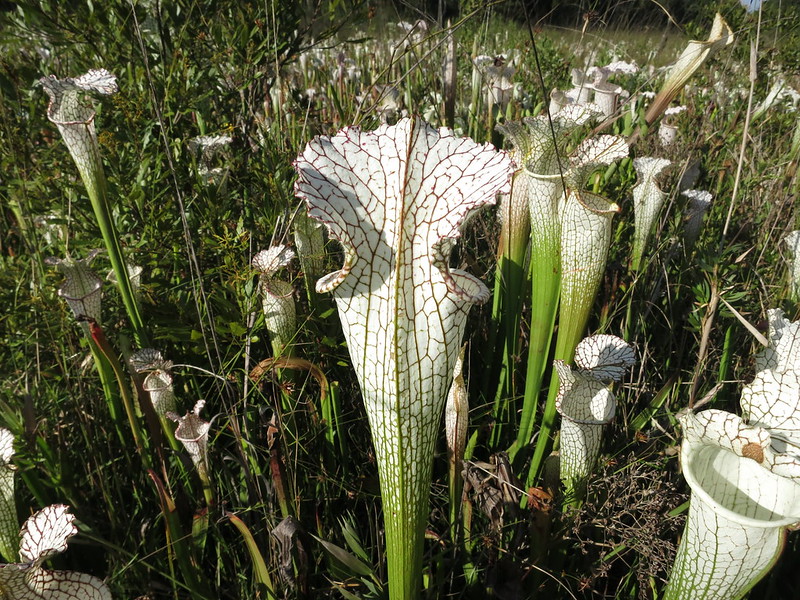
A strange greenish clone just opening up. I forgot to mention that S. alata was found here, but only a plant here and there. This is likely the result of crossing with alata and back-crossing with leucophylla:
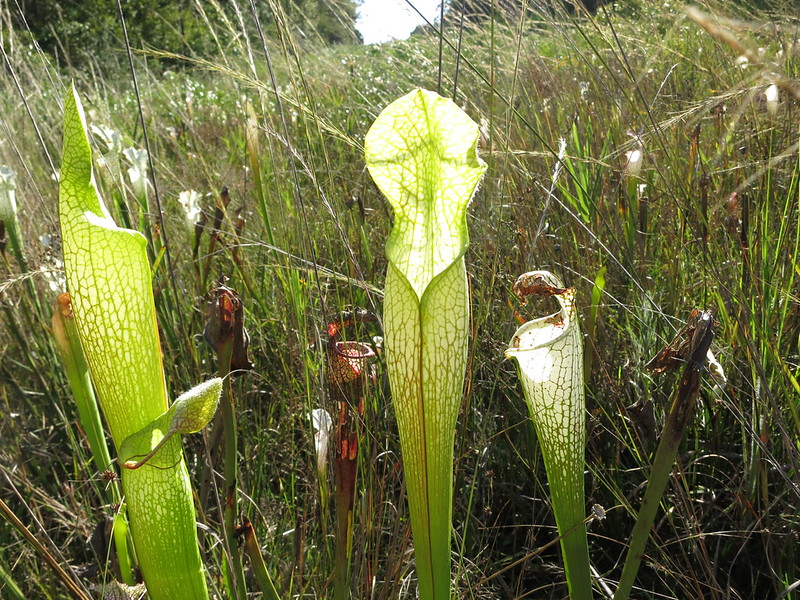
Another one:
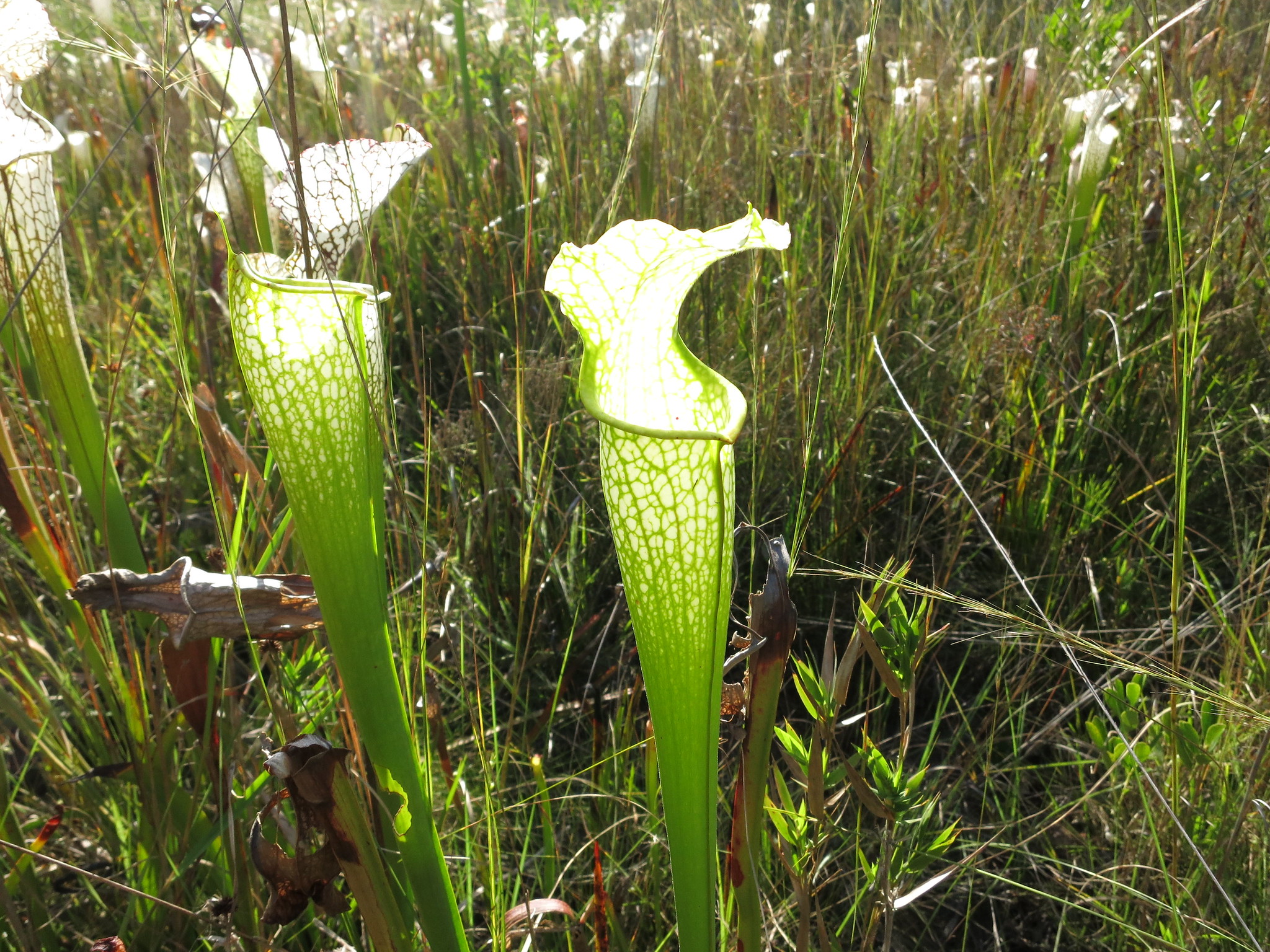
Now this is what I was looking for-a really nice S. leucophylla var. alba:
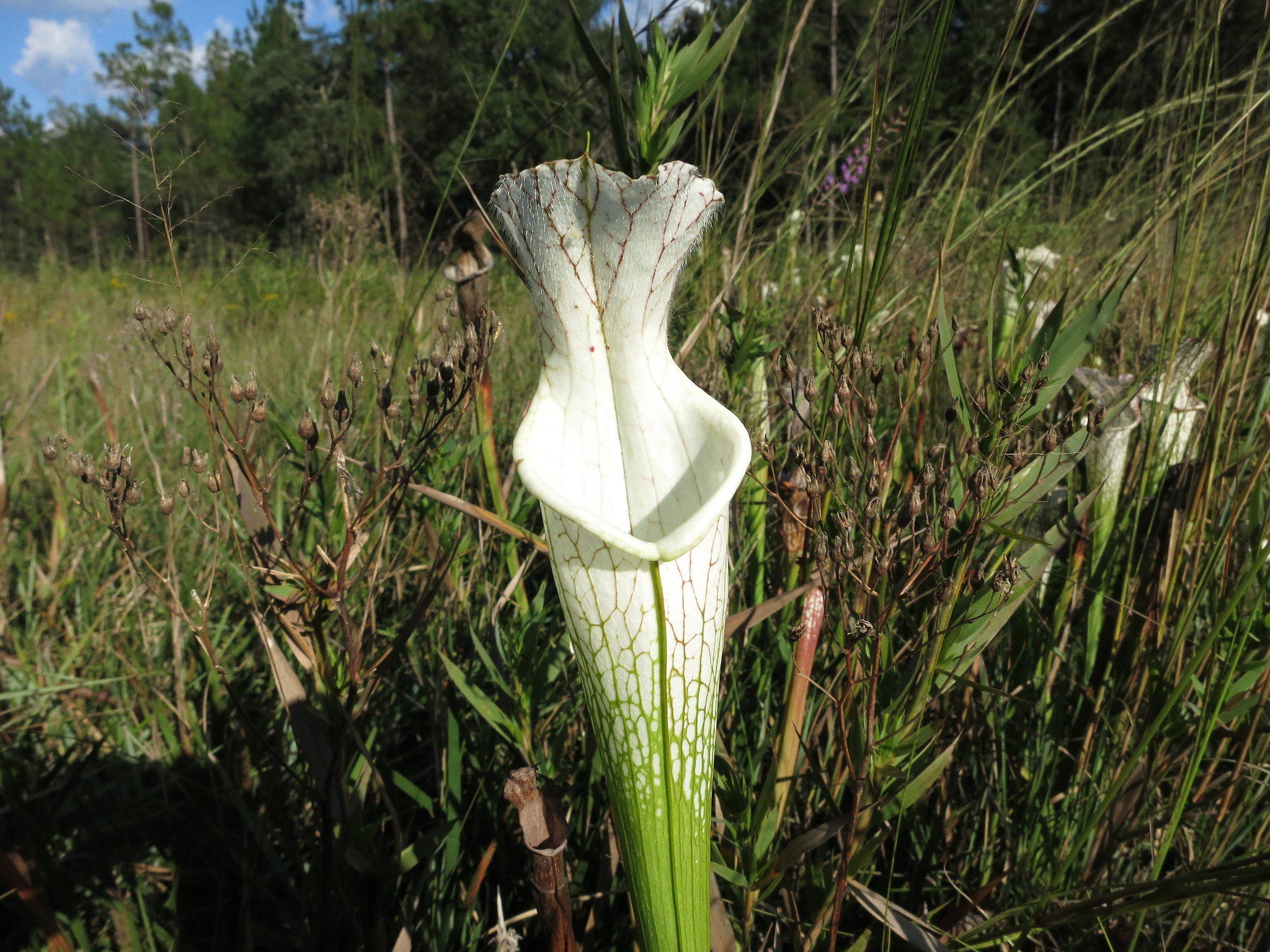
Before people dominated the landscape and plowed or altered every square acre of land, fires would come in and burn up the forest, creating new habitats for Sarracenias to colonize. Today, those forest are now homes, structures, and farms where fire isn't permitted since it would damage people's property.
It's surprising how short lived many of these sites are, especially during the more recent times. On the other hand, some patches still exist today, and they've struggled to survive the face of human negligence and destruction.
This site below only exists because a power company consistently clears the grasses every year or so to protect their electrical equipment. Nearby, On the side of the road, I had already seen signs of round-up, and it's only a matter of time when they spray this field. One application of herbicide can ruin centuries of growth. If I had to bet, this site will be sprayed in the next few years once they realize the cost savings.
As pessimistic as it may seem, this is the reality for many of these sites. We visited many historic sites that didn't have a single plant left due to annual herbicide applications. However, there are some remote sites like the one below that still exist today, so maybe...just maybe a few of the "unprotected" sites will stand the test of time.
Enough doom and gloom talk, let's check out these beautiful fields! Here are some S. leucophylla in Washington Co, AL, photos taken 9/11/13. First couple of photos focus on the field itself-there were 3 large patches at this site:

Plants here were as healthy as can be!

There's nothing like a huge field of leucophyllas:



There were also S. rubra wherryi and S. psittacina (and some giant psitts!) at this site as well, but the grass was really tall, and you could only see the leucos. Still very inspiring to see a patch this size, which is still relatively small compared to what used to exist:

thousands of plants everywhere:

Tons and tons of plants:

Poor Axel Bostrom of California Carnivores stepped on a fire ant hill at this site, and the pain was so extreme, he had to go wait in the car. These hills were hidden deep in the grass, and were EVERYWHERE:

nice typical S. leucophylla with a lynx spider. Notice the beautiful red lips!


S. leucophylla var. alba with a small lynx spider:

This field was loaded with a diverse amount of S. leucophylla var. albas:

S. leucophylla var. alba-this one has a little more green in it. Notice the brown marks on the lower portion of the petiole: the traps were overloaded with love bugs, causing "indigestion":

Another beautiful clone of a "regular" S. leucophylla-this one has nice red veins:

S. leucophylla, almost an alba, but not quite:

another shot-reminds me of a wanna-be Hurricane creek white:

Check out the slight red blush on the sides of the "throat" on this one. If you look carefully, there's a small spider hidden in the lid of the trap:

Trap is just starting to open up on this one:

A regular S. leucophylla, and a var. alba in the lower right hand corner:

A strange greenish clone just opening up. I forgot to mention that S. alata was found here, but only a plant here and there. This is likely the result of crossing with alata and back-crossing with leucophylla:

Another one:

Now this is what I was looking for-a really nice S. leucophylla var. alba:






